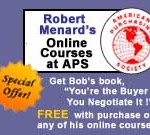
Robert Menard, Certified Purchasing Professional, Certified Professional Purchasing Consultant
Editor’s note: in the spirit of cost savings, one of the most fertile areas to cultivate is workers’ occupational health and safety. If humanitarian reasons are not enough motivation for some employers to act, here are some compelling economic reasons. This story was first published in the industry magazine, Occupational Safety & Health” in 2001. Little has changed in the interim.
“Business is good, profits are up, and we have an acceptable industry average level of injuries and illnesses!” Such complacency reflects an attitude afflicting employers large and small alike. Such thinking costs businesses billions in lost profits. For example, in an article in Warehousing Management, OSHA estimated that Work related Musculoskeletal Disorders (WMSD) alone costs between $15 and $20 billion each year, accounting for $1 of every $3 spent on workers compensation claims. The late Illinois Senator, Everett Dirkson is said to have observed…“Take a billion dollars here and a billion dollars there, pretty soon you’re talking about real money”. The billions in lost profits due to WMSDs would seem to qualify to most of us as real money.
Environmental Health and Safety (EH&S) pros value the human, economic and intangible benefits derived in a safety-oriented environment. We believe in spreading this gospel throughout the business world. The major obstacle is typically the question of how to persuade management to invest in a concerted EH&S effort. The answer is to demonstrate that economic benefits such as large Return on Investment (ROI) necessarily accrue to the bottom line because of this investment. That is, by phrasing our argument in financial terms, the language of business, we overcome the inevitable resistance encountered in selling to EH&S proposals to the decision makers.
In terms of dollars and sense, Occupational Safety & Health reported in June 2000 “…an OSHA recordable accident costs $25,000 to $30,000, while an injury resulting from repetitive motion can run up to $100,000”. (Occupational Health and Safety, June 2000, p. 103, Safety Incentive Programs~Effective Business Tools, Stevens Publishing Corp) By proactively avoiding costly workers compensation claims, we ‘find’ money that would otherwise go down the expense drain. As any accountant or entrepreneur knows, it isn’t what you earn but what you save that counts. Every dollar saved through EH&S intervention translates directly to a dollar in profit, without the dilution of costs and expenses.
Here is one example. According to Management Review published by the American Management Association, “Another measure of success: in the early 1990s, Plasticolors (a manufacturer in Ashtabula, Ohio) workers’ compensation costs were between $115,000 and $125, 000 a year. Currently, compensation costs are about $12, 000.”
Here is another example from a feature article on insurance in Engineering News Record, (ENR, Sept 14, 1998, p19, Insurance-Boston may get big dividend, McGraw-Hill Publishing,) “Central Artery/Tunnel (Boston, MA) officials had originally estimated a 75% loss ratio for W/C and a 65% loss ratio for CGL…but those numbers have nose dived, due to a consolidated safety program that includes…job hazard analysis, written safety plans and mandatory employee training…Our loss ratios for W/C (Workers’ Compensation) is 23% and for CGL, it is 12%says the CA/T risk manager…We anticipate full recovery of all insurance premiums.”
As to the ROI matter, visit the Washington State Department of Labor and Industries website. The Ergonomics link explains how the Ergonomics standards will affect Washington employers. As part of its sales job, LNI promotes its cost-benefit analysis. The $80.4 million dollar predicted annual cost to employers is expected to generate $340.7 million dollars in benefits (savings), or a 424% ROI – an impressive point expressed in attractive business language. Further, the state run mandatory W/C insurer is even offering a grant to fund pilot projects for employers mounting proactive programs in advance of the phased-in Ergo regulations’ effective date. This grant is found money in the extreme, for the EH&S enabled company.

online training in purchasing, negotiation, and sales
Most case studies identify large, measurable decreases in W/C premiums as noted above. Other benefits proceeding from EH&S, to which business labor and government all mutually agree include:
Reducing
- Medical expenses, including rehabilitation
- Worker retraining and replacement costs
- Federal, state and local fines and sanctions
- Legal fees and administrative costs
Increasing
- Productivity and morale, due to lower injury risk
- Job tenure and worker turnover
- Worker participation and input in safety and productivity
- Empowerment in employees leading to greater company spirit
The second impediment is the “and we have an industry ‘average’ level of injuries and illnesses” rationalization. The ‘average’ employer does not fully appreciate the earnings erosion induced by the lack of a EH&S programs. Indeed, few managers realize how their W/C premiums are calculated. Just as the driver with moving violations and accidents pays more for auto insurance, the employer with a dismal safety record pays significantly higher premiums.
As to that ‘average’ employer, the manual rates for W/C coverage apply. Even if we pay the manual rate, we pay too much! (See Glossary Primmer) Favorable experience, due to well run EH&S programs will drastically lower experience rating, and therefore premiums. For the self-insured employer, fewer and less expensive claims mean that earnings climb as each accident is avoided. Moreover, the average employer never reaps the benefits available only to the EH&S minded employer.
Thus, the law plainly favors employers displaying a sense of responsible EH&S leadership and rewards them with financial and legal bonuses not otherwise available.
Upon investigation therefore, it becomes undeniably obvious that no “too expensive” excuse justifies rejecting the EH&S investment. Ironically, this good news must be convincingly communicated to those in position to profit by the EH&S investment. They must be fluent in terms such as Loss Reserves, Experience Modification Factor, Frequency, Severity, Primary and Excess Losses. If not, then recognize that much work needs to be done. So, where and how do we do we begin?
This business lane on ramp to EH&S ignores to the humanistic factors of life and health. Does this mean that people are not important to the process, or are secondary to profits? On the contrary, people are the ultimate focus. We merely take the quickest route to getting the job done. The finest EH&S program in creation does nobody any good if stays on the wish list. This financial approach provides a solution to the EH&S issue that management can buy and workers can embrace. Once initiated, and properly maintained, it provides superb worker protection while serving up bonus profits as a by-product. What is better than that?
Glossary Primmer
|
Term
|
Definition[2][3]
|
Importance and Relationship
|
|
Excess Loss
|
In general, not a ratable portion of a loss. Related to Severity,
|
Very large losses are discounted for rating purposes.
|
| Expected Losses |
The statistical average loss amount predicted for a particular classification.
|
This is the baseline to which your losses will be compared for ratings purposes.
|
|
Experience Modification Factor (EMF)
|
A statistical prediction of loss experience that is better or worse than the average risk in a particular classification
|
The EMF adjusts your MR, up or down, to determine your premium. It is controlled by the premium payer’s loss experience.
|
|
Frequency
|
The number of particular claims occurring in a given time period.
|
Generally given more weight than severity, it tends to raise the EMF.
|
|
Loss Reserves
|
Amounts set aside to cover future losses such as stipends, medical and legal expenses, etc., accruing from claims
|
Frequency, and certain types of losses (ergonomics) raise reserves.
|
|
Manual Rate
(MR)
|
A calculated rating issued per risk classification by actuarial bodies, usually the NCCI.
|
Actual premiums far below the MR usually apply to businesses that invest in EH&S
|
|
NCCI
|
National Council on Compensation Insurers, Inc in Boca Raton, FL
|
NCCI generally makes the calculations that determine MR
|
|
Premiums
|
The amount paid by for coverage. It is a function of the MR, EMF, EH&S record, company size, number of employees and other factors.
|
Profitability and cash flow considerations.
|
|
Primary Losses
|
Generally, a ‘dollar for dollar’ charge for costs incurred in claims. Related to Frequency
|
Smaller, frequent claims, negatively affect EMF more than infrequent larger claims.
|
|
Severity
|
The relative size of claims, usually expressed in dollar amounts
|
Rare, larger losses have less affect on EMF. See Excess Loss.
|
Credit and attribution is given to
Workers’ Compensation Answer Book, Mark S. Rhodes, Esq., Gordon L. Ohlsson, ESQ, Panel Publishers, a Division of Aspen Publishers, Inc, 1997
ABC’s of Experience Rating, NCCI
[2] Workers’ Compensation Answer Book, Mark S. Rhodes, Esq., Gordon L. Ohlsson, ESQ, Panel Publishers, a Division of Aspen Publishers, Inc, 1997
[3] ABC’s of Experience Rating, NCCI, www.ncci.com











